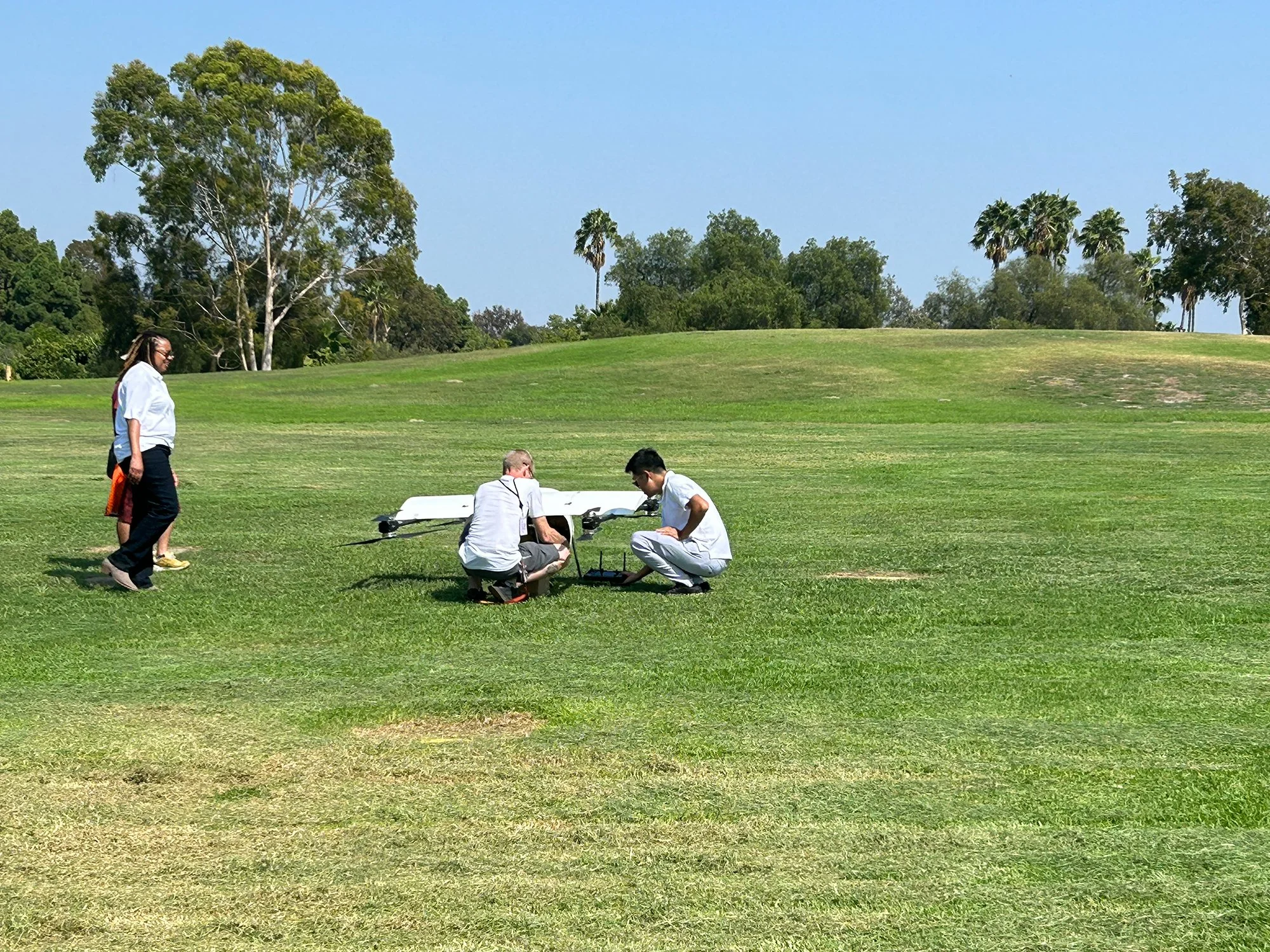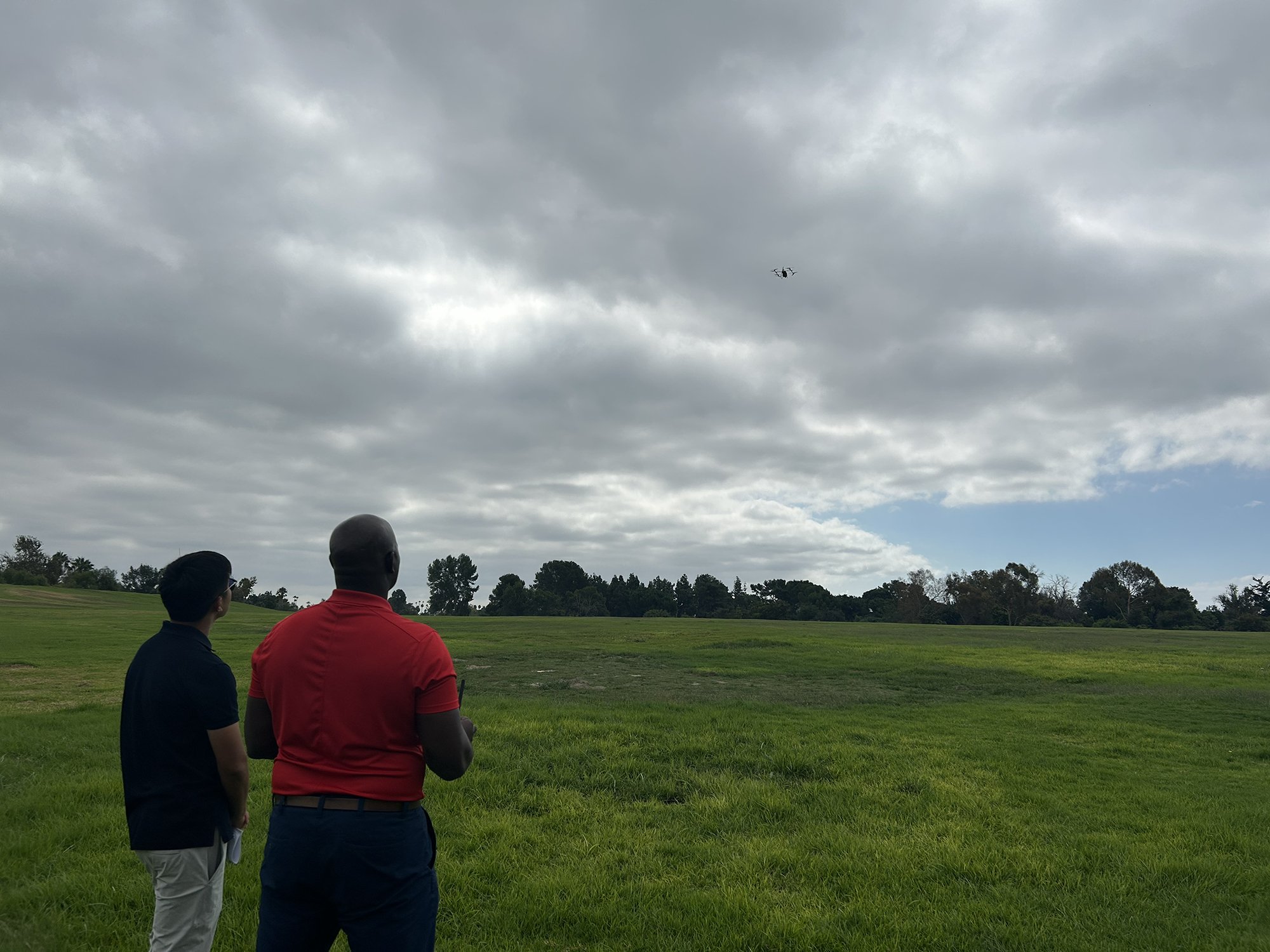Mastering the Skies: The Vital Role of Drone Flight Training in Commercial Delivery Operations
Drone flight training on new unmanned aerial vehicles (UAVs) is of paramount importance for operators to conduct safe, efficient, and successful drone missions. Where small consumer drones handle fairly similarly to each other, the unique airframes being deployed in commercial operations necessitate some hands-on learning to master.
Here at A2Z Drone Delivery, we have developed a comprehensive hands-on training course that our new customers complete before taking delivery of their new drone delivery system. While most of our new customers are seasoned UAS pilots, these training sessions go beyond a basic walk around of their new craft. The training ensures they are familiar with the unique flight controls needed for operating our RDS2 drone winch, and affords them hands-on stick time with their new commercial delivery drone.
The RDSX Pelican’s Unique Airframe and Flight Characteristics
Launched in the spring of 2023, RDSX Pelican is our heavy-lift, long-range delivery drone. Its hybrid vertical-takeoff-and-landing (VTOL) design combines large coaxial octa-rotors for stable takeoff, landing, and hover with the long-range capabilities of a fixed wing airframe. With this hybrid design, the Pelican allows commercial operations to deploy payloads up to 5 kg out to a range of 40 km. For many new customers familiar with standard multi-rotor flight or fixed wing flight characteristics, the Pelican is likely their first opportunity to fly this hybrid VTOL-style craft. The Pelican was designed to make the transition for these pilots as seamless as possible. So, it hovers no differently than any other coaxial octocopters which puts multi-rotor pilots at ease, and when it transitions to forward flight it behaves much like a fixed wing aircraft.
The Pelican Hands-On Training Curriculum
Developed in-house by our team, the A2Z Flight School training ensures each member of a customer’s flight team is familiar with their new airframe. The curriculum begins with initial pre-flight checks of propeller orientation, battery voltage, communications between the ground station and the UAV, etc. Pilots learn how to swap batteries, and familiarize themselves with the configuration of the user ground station, flight controls and winch operations. Finally, pilots review all safety systems and redundancies built into the RDS2 drone winch so they feel comfortable transporting payloads aloft.
With initial classroom review complete, the training takes to the skies at our local test field in Long Beach, CA. The flight training begins with basic maneuvers allowing new VTOL pilots to experience the slight differences in the Pelican’s flight characteristics compared to the hardware to which they are accustomed. Once they have mastered these basics, the same maneuvers are conducted with a payload slung on the drone winch.
A2Z Drone Delivery customers practice with the new RDSX Pelican before it is shipped to their headquarters.
Delivery is the Name of the Game
The next phase of training delves into working with the RDS2 drone winch. While some may have previously integrated the drone agnostic RDS2 with one of their other airframes, for most, this is their first opportunity to get hands-on with the purpose-built UAV winch.
The team revisits the many integrated safety measures showing new pilots just how these systems combine into the compact winch system. They then walk through the winch operations, and the user interface in the ground station controls. They check through the payload monitoring system, passive payload lock, and tether abandonment capabilities which allow the payload to be abandoned if it becomes inadvertently entangled.
Instructors then demonstrate the manual operation of the winch, and new pilots get their first opportunity to conduct simulated deliveries. They review the various delivery mechanisms that can be attached to the drone winch, and learn how it feels on the sticks when the auto release mechanism deposits a payload or the payload hook starts to hoist up a parcel from the ground. It is not uncommon for some friendly competition to take over the learning session as new Pelican pilots jockey to see who can manually land a payload closest to the center of the landing zone!
Taz Little, the Co-Founder & VP of Field Operations & Development for Columbia, SC-based AINautics test drives out new RDST Longtail medium range delivery drone while completing training on his new RDSX Pelican.
Practicing Autonomous Pre-Planned Deliveries
With confidence that they can take full manual control of a flight, if necessary, the training now shifts to the autonomous delivery capabilities built into the A2Z Ground Control Station (A2Z QGC). Though pilots need to be at ease in manual flight, these autonomous mission capabilities streamline the pilot’s job. A2Z QGC integrates all drone flight controls and winch operations with live telemetry and navigation data streaming from the drone. Its open-source Q Ground Control mission planning software allows pilots to input pre-planned delivery missions and conduct those deliveries at the touch of a button.
During this phase of training, pilots learn to input a delivery destination and waypoints along the way. The waypoints can be used to ensure the drone safely navigates around any known obstructions, no-fly zones, etc. as it proceeds to its delivery destination. Once on station, the drone assumes a safe hover high above people and property, then the autonomous system automatically lowers the payload on the drone winch, The payload auto-releases as it touches down so no one needs to interact with the delivery drone. This means recipients do not need to wait for the drone to arrive, but also mitigates any potential for a recipient to entangle the tether in any way. Once the tether is reeled back up, the drone navigates its same return path and lands at the operation deck where pilots practice quick turn-around for another mission, or power down the systems for transport and storage.
Being Prepared by Simulating Emergencies
The A2Z Flight School curriculum is just the introduction to our systems. As is common with all pilot training, our sessions conclude with some real-life simulations. This includes preparation for unexpected system failures. Instructors will simulate tethers tangled in trees or wires, forcing the pilot to retake manual control of the drone and abandon the tether to safeguard the airframe. Instructors will drill numerous situations such as simulating aborting autonomous missions, losing comms, encountering unanticipated obstructions, etc. We drill these unlikely scenarios to ensure pilots are comfortable that they are able to take to the skies for their own drone delivery operations.
Conclusion
Our commercial delivery drone fleet and purpose-built drone winch are being deployed across an array of industries for a variety of unique use cases. Beyond last-mile parcel delivery most-commonly at the top of consumer’s minds, our delivery drones are being deployed for transporting medicines and test samples, assisting first responders in the field, offshore logistics, water sample collection and more. If you would like to explore how our commercial drone systems can be put to work for your unique needs,contact our team today.






